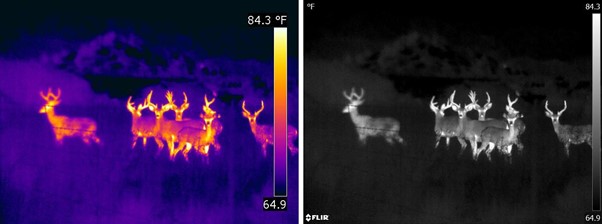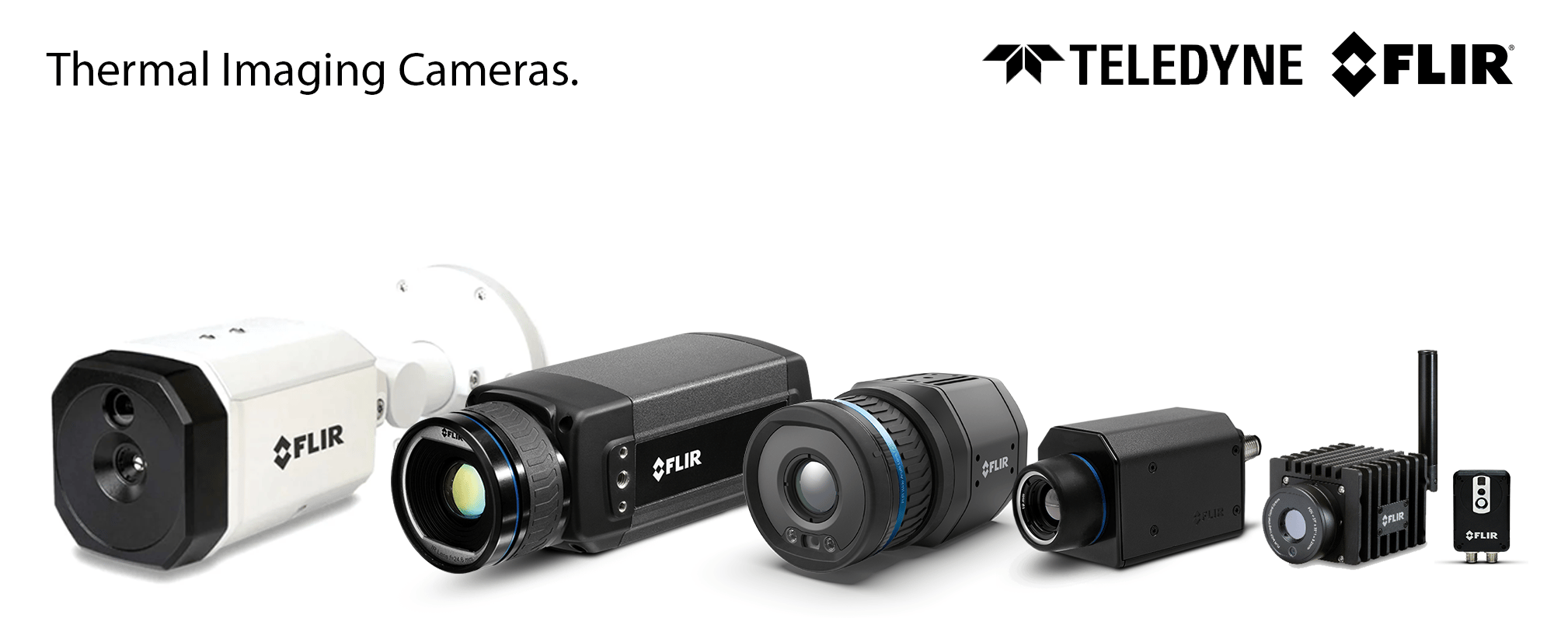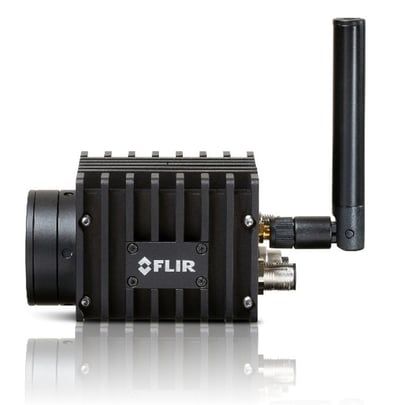Non-Visible Imaging: Thermal Cameras & Long-Wave Infrared (LWIR)
Welcome back to this series of blogs on non-visible imaging. Last week we took a look at short-wave infrared (SWIR) lenses in machine vision systems, and gave a few lens recommendations for SWIR imaging.
This week, we’re looking at the long-wave infrared (LWIR) spectral range, which is what thermal cameras function within.
Whether you’re interested in building your own machine vision system for a project, a commercial application, or are just interested in learning more about non-visible imaging for machine vision, we hope you enjoy it!
The IR Spectrum
To recap the last couple of blogs, IR (infrared) light refers to a non-visible range of the electromagnetic (EM) spectrum with a longer wavelength than visible light.

The Sony IMX990 & IMX991 sensors seen in modern SWIR (short-wave infrared) cameras are capable of capturing short-wave infrared light, which can highlight differences within and between materials that would otherwise not be visible to the naked eye or traditional machine vision camera.
Long-wave infrared (LWIR) refers to the specific range of IR light between around 6,500nm-12,000nm. In this range of the EM spectrum, as the wavelengths are much larger than visible and SWIR light, it is better to consider infrared as thermal energy rather than non-visible light. This brings us onto thermal imaging.
Thermal Imaging
Thermal energy and visible light both make up different ranges of the electromagnetic spectrum, but a camera that can detect visible light won’t be able to detect thermal energy, and vice versa. Thermal cameras capture infrared energy and use this data to display a digital image.
Heat sensed by an infrared camera can be very precisely measured, allowing for a large variety of applications. A FLIR thermal camera can detect tiny differences in heat – as small as 0.01°C – and display them as shades of grey or with different colour palettes.

The same image with heat differences displayed in the ‘ironbow’ and white hot palettes.
Thermal Camera Sensors
The sensor in a thermal camera is what really separates it from a standard machine vision camera.
The sensor can come in a variety of pixel configurations from 80x60 to 1280x1024 pixels or more. This is the resolution of the camera.
The reason these resolutions are low in comparison to standard machine vision sensors is because, as previously mentioned, LWIR energy has much larger wavelengths than visible light.
This means that each physical sensor element needs to be significantly larger than its standard visible light-detecting counterpart. This results in thermal cameras usually having a much lower resolution, or fewer pixels, than visible sensors of the same mechanical size.
Heat Signatures
Everything around us emits thermal energy, and with it will carry its own heat signature. Even if two objects sat side-by-side have even a nuanced difference in heat signatures, a thermal sensor will be able to distinguish between them regardless of lighting conditions. This means that thermal cameras can see in complete darkness or through smoky environments.
Choosing a Thermal Camera

Thermal cameras from Teledyne FLIR
Teledyne FLIR have been pioneering thermal imaging for many years now, and have a solid line-up of camera options in this field. For the full range, check out our thermal cameras page.

A50/A70 Smart Sensor Thermal Camera from Teledyne FLIR
The new A50/A70 smart sensor thermal cameras from Teledyne FLIR are ideal for users who want built-in, on-camera analytics and alarm capabilities for condition monitoring and early fire detection applications.
With options for Wi-Fi, an integrated visual camera, and GenICam-compliant GigE compatibility, FLIR A50/A70 cameras are a flexible, configurable solution to meet the unique needs of automation customers across a broad range of industries. When used as a system component for cloud and Industrial Internet of Things (IIoT) solutions, A50/A70 cameras can help companies protect assets, improve safety, maximise uptime, and minimise maintenance costs.
Thermal Imaging Applications
Thermal cameras are now used for a wide array of applications. We supply thermal cameras for those looking to monitor:
- Seal inspection on food and drink packaging
- Temperature in industrial automation
- Overheating in engines or motors
- Fires in waste management sites
- Automatic braking in autonomous vehicles
- Elevated body temperature in health screenings
If you’ve got an application you think might benefit from a thermal camera, be sure to get in touch with one of our team. Our machine vision engineers are well-equipped to help answer any imaging questions and solve any vision conundrums you may have.
 Thermal Imaging Solutions from ClearView Imaging
Thermal Imaging Solutions from ClearView Imaging
Looking for thermal machine vision components? Be sure to check out our great range on our thermal cameras page over in our products section!
Here at ClearView, we have a broad range of knowledge and machine vision expertise to help you decide on the right solution for your project.
We offer friendly expertise and a huge range of industry-standard quality machine vision components for printing and packaging, robotics, industrial automation, medicine, life sciences, and the automotive industry, just to name a few.
Our experts are happy to help no matter what your question or problem may be. Feel free to get in touch with us and one of our machine vision experts will be ready to help you get going with your project!






